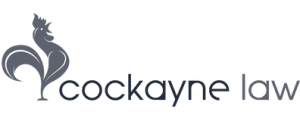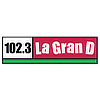What Happens If You Are At Fault In A Car Accident In Utah?
If you are at fault in a Utah car crash, your insurer pays for the other driver’s losses up to your policy limits, your PIP handles some medical bills, premiums may rise, and you can be sued under Utah’s comparative fault rules.
A wreck happens fast. Now you worry about what comes next. If you were at fault, you face repair bills, injury claims, and hard phone calls. Utah’s rules set a clear path. Your insurer pays up to your limits. Your PIP covers certain medical costs. Fault can be shared. If you are mostly to blame, you could face a lawsuit.
The good news is that there are steps you can take today to lower the damage. This fully detailed article explains what “at fault” means in Utah, how insurance works, what penalties to expect, and when to call a car accident lawyer in Utah.
Key Points
- Fault can be shared between drivers in Utah.
- PIP pays early medical bills regardless of fault.
- You can be sued if injuries pass legal thresholds.
- Premiums can rise after an at-fault claim.
- Minimum liability limits increased in 2025.
- You have four years to file most injury suits.
What Does “At Fault” Mean in Utah?
Being at fault means your actions were the main cause of the crash. Utah uses modified comparative fault. Each party gets a percentage of blame. Injury money cannot be collected from others if you are at fault for more than 50% of the injury. Compensation you seek will be reduced by your share if you are less than 50% at fault.
Insurers and, if needed, a jury use police reports, photos, statements, and laws to decide these percentages.
Why this matters
Fault percentages control who pays and how much. There are many small details that affect the split. In many cases, the evidence you collect at the scene makes all the difference.
Utah’s No-Fault Benefits And When Lawsuits Happen
Utah is a no-fault state for basic medical bills through Personal Injury Protection, called PIP. PIP covers at least $3,000 in medical costs per person. Plus, limited lost wages and funeral costs, no matter who caused the crash. You may bring an injury claim against the at-fault driver if your medical bills reach $3,000. Or you suffer certain serious injuries such as permanent disability, disfigurement, or death.
What PIP does not cover
PIP does not pay for the other driver’s property damage. It also does not shield you from a lawsuit when losses are high.
Insurance Rules After An At-Fault Crash
You are accountable for any damage you cause to another driver’s property up to your liability insurance limits. As of January 1, 2025, Utah Law’s required minimum liability limits are $30,000 per person for bodily injury, $65,000 per accident for bodily injury, and $25,000 for property damage.
First-party vs. third-party claims
- A first-party claim is to your own insurer for PIP and collision.
- A third-party claim is made by the other driver against your liability coverage.
- Your insurer defends you if you are sued, but only up to policy limits.
Civil And Financial Consequences You Might Face
Expect a possible rate increase at renewal after an at-fault crash. If you carry only minimum limits and the other side’s losses are high, their lawyer may seek the difference from you. If you destroy public property, a city or the state could also make a claim. If you violate a traffic law, you may get a citation and points. It can also raise rates. In serious cases involving alcohol or reckless driving, criminal charges may apply.
How Fault Is Decided In Practice?
Insurers study the scene and assign fault by percentage. They look at the police report, Utah traffic laws, vehicle damage patterns, skid marks, dashcam or doorbell video, and witness statements. Utah’s modified comparative fault rule then limits recovery based on each driver’s share. If your fault is equal to or higher than everyone else combined, you cannot recover injury money. This 50% bar is the key rule in Utah.
Helpful evidence
- Clear photos from many angles
- Names and numbers of witnesses
- Repair estimates and medical records
- Your written notes made the same day
What To Do Right After You Think You Were At Fault
Stay calm. Call 911 if anyone is hurt. Move cars out of traffic if safe. Exchange insurance and contact details. Take photos and short videos. Do not argue about blame at the scene.
Report the crash to your insurer quickly. In Utah, police reporting is required for injury, death, or significant property damage; the property damage threshold is generally around $2,500. Despite the police not responding, you may still need to file a report.
What not to do
Do not say “it was my fault.” Do not post about the crash online. Do not ignore pain that appears later.
How Lawsuits Work If You Are Sued?
If the other driver’s injuries pass the no-fault threshold or their losses are large, they may sue you. Your insurer hires an attorney to defend you. For most car accident injury lawsuits in Utah, the statute of limitations is four years from the date of the accident. Evidence is exchanged, fault is argued, and many cases settle before trial. If a jury finds you mostly at fault, you could owe damages up to your policy limits and, if the limits are too low, out of pocket.
Settlement basics
Most cases resolve by settlement. Settlements weigh medical proof, lost wages, pain and suffering, and fault percentages.
Common Insurance Outcomes After An At-Fault Crash
Your premium can increase at the next renewal. A surcharge may apply for several years. If you had accident forgiveness, that feature may reduce or avoid a first increase. If your car is financed, your collision coverage pays for your own car minus your deductible. If you lack collision, you pay your own repairs. If your car is totaled, the payout is the actual cash value, not what you still owe on a loan.
When The Other Driver Shares Blame
Fault splits are common. Maybe the other driver was speeding, on a phone, or ran a light too. If they carry part of the blame, their recovery from you is reduced by their share. They are not entitled to recover if they are 50% or more at fault. Utah’s modified comparative fault system controls these results.
Steps To Protect Yourself Financially
Raise your liability limits if money allows. Today’s medical bills and car prices can pass minimums fast. Consider umbrella coverage for extra protection. Keep PIP. Add collision and uninsured/underinsured motorist coverage for yourself and your family.
If a claim is filed against you, stay in contact with your adjuster, reply on time, and keep records of every call and letter. The right plan limits risk if you are found at fault.
Talking To Insurers Without Hurting Your Case
Report the crash soon, but keep it simple. Share facts, not guesses. In the event that an adjuster asks you for a recorded statement, you can schedule it for later. Read any forms before signing.
If the claim is important or the facts are complex, speak with a car accident attorney in Utah before you give detailed statements. That choice can help you avoid mistakes that raise your share of fault.
Hire the Best Car Accident Attorney Utah – Forget your Worries
Why this part matters to you
When money, health, and fault are on the line, you need steady help. Paperwork and calls stack up fast. Adjusters may push for quick answers. A local guide takes that load off you, sets a plan, and protects your rights from the start. A car accident lawyer in Utah also knows local judges, common insurer tactics, and the proof that moves cases forward. The sooner you bring in help, the fewer surprises you face later.
Work With Chris Cockayne And the Team at Cockayne Law
Chris Cockayne focuses on helping crash victims and families across Utah. His team listens first, reviews police reports and medical records, and builds a clean picture of fault. They talk to witnesses, request video, and move fast to save key proof.
If a lawsuit is filed, they defend you within your policy limits and push for fair results. If the facts show shared blame, they fight to keep your percentage as low as the proof allows. With clear updates and straight talk, Cockayne Law helps you make good choices at each step. When you want a car accident attorney in Utah who treats you like a person, not a file, this team is a strong place to start.
Final Thoughts
An at-fault crash is stressful, but there is a path forward. Know what “at fault” means, use your PIP, and lean on your insurer to defend you. Save records and photos. Do not guess or admit blame.
Upgrade your coverage if you can. So one mistake does not put your savings at risk. When injuries are serious or fault is disputed, speak with a car accident lawyer in Utah for guidance. Get the instructions that fits your case. Smart steps today can steady your money, your claim, and your peace of mind.
FAQs
Will my rates go up after an at-fault crash?
They can. Insurers often add a surcharge at renewal after they pay out for an at-fault loss. The size and length of the increase depends on your insurer, your record, and the claim size. Ask your agent how long any surcharge could last.
What if both drivers share blame?
Utah allows shared fault. Your share lowers what you can recover. If you are 50 percent or more at fault, you cannot collect injury money from the other driver. The same rule applies to them. Evidence decides the split.
Does PIP pay the other driver’s bills if I am at fault?
No. Your PIP pays your medical bills and some lost wages. The other driver’s PIP pays theirs. If their injuries meet Utah’s threshold, they can also bring a claim against your liability coverage.
Can I change the insurer’s fault decision?
Sometimes. Provide new evidence like videos, witness names, or a corrected report. Ask for a re-review. If needed, a car accident attorney in Utah can push back and, if a suit is filed, present your case to a jury.
When should I call a lawyer if I was at fault?
Call as soon as injuries look serious, the facts are unclear, or you are getting pushy calls for statements. A car accident lawyer in Utah can handle insurers for you, protect your rights, and guide you through Utah’s rules.









